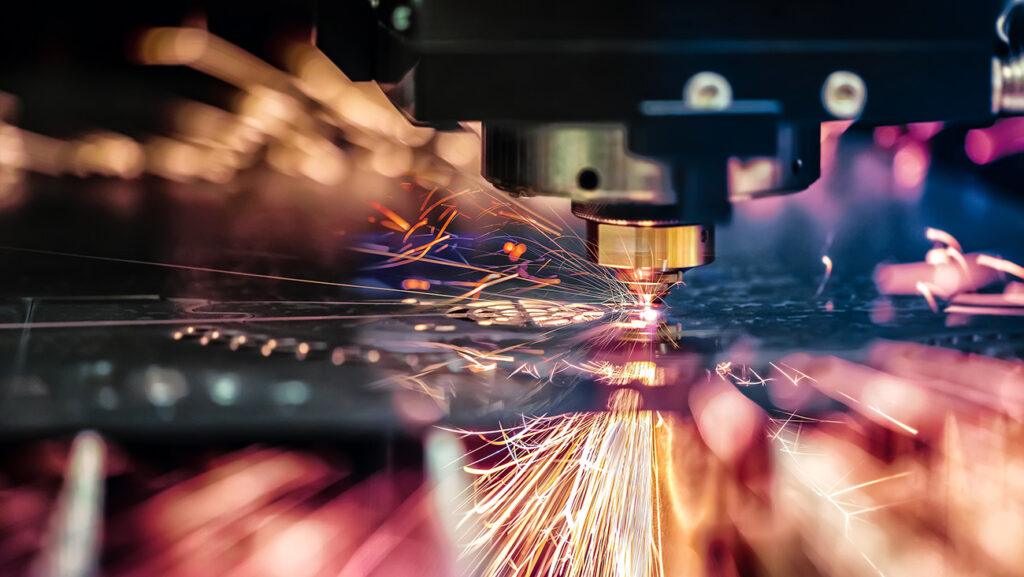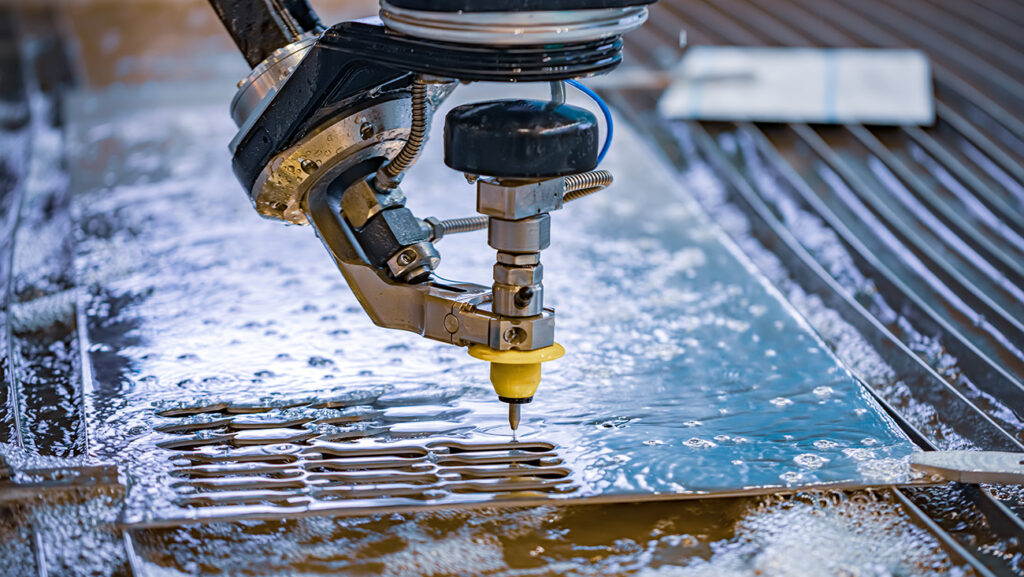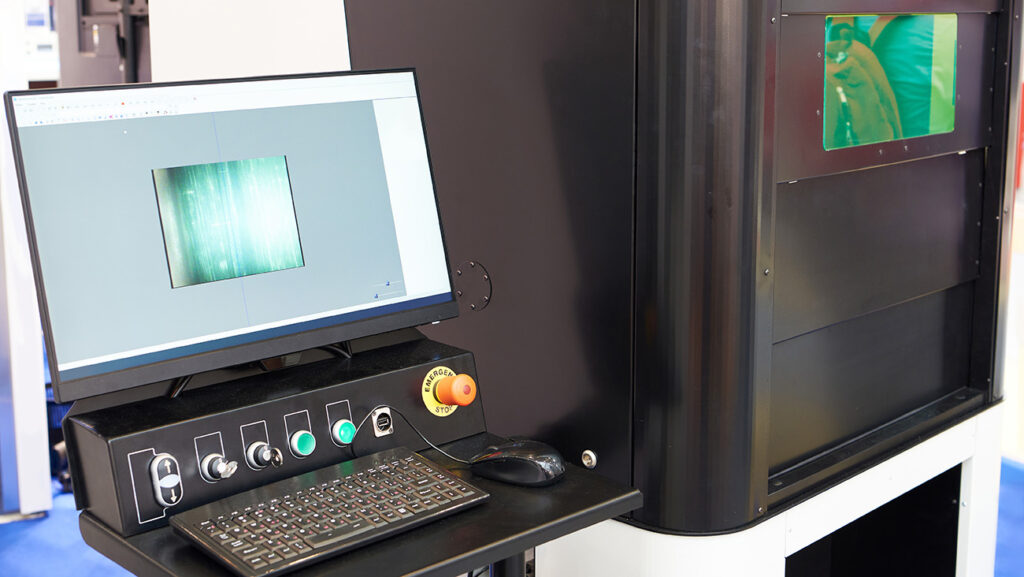Laser Man Answers Your Top 10 Laser Processing and Manufacturing Questions
Posted on April 1, 2017 in Blogs

Invented in 1960, the laser was introduced to the plant floor just five years later when the first production laser-cutting machine was used to drill holes in diamond dies. But even though lasers have had a long and successful history in manufacturing, people still have a lot of questions about them in that role. So we thought it would be helpful to have our resident expert, Laser Man, answer the top 10 questions we get from prospective customers who are thinking about whether lasers are the right option for their manufacturing jobs. Here they are:
1. Can you cut this?
Many people’s impression of lasers as a cutting tool comes from the famous scene in the 1960s James Bond Movie, Goldfinger, where Sean Connery is strapped to a steel table that’s being sliced in half by an industrial laser that is also about to slice through him. While there are lasers capable of such feats most industrial lasers (including ours) typically cut through metals less than a quarter inch thick — so if it’s thinner than that, the answer to this question is probably “yes.”
2. Can you weld this?
The answer to this question is less certain than for the previous question. Unlike arc welding that typically requires a flux to bund to pieces of metal together, laser welding creates a direct metal-to-metal bond by melting their surfaces where the two pieces join. But not every metal can be bonded directly to every other metal, so it’s best to ask us if your specific weld is possible.
3. Can I get this done today?
The answer is often “yes.” We are set up to accept jobs that require quick turnaround — although we may ask for a rush charge if meeting your deadline causes us to incur extra costs — like paying overtime or running an extra shift. Many jobs (or at least a significant portion of most jobs) can in fact be turned around within a day, depending on quantity required and whether the materials to do the job are available.
4. Are you ISO compliant?
Yes, and we have been for over 10 years.
5. Are you ITAR compliant?
Yes, for almost five years.
6. Can you handle high volumes?
Yes. Just like we can provide quick turnarounds, we are also set up to handle very high volumes. We have a broad variety of industrial lasers and our operators are cross-trained so we can allocate them efficiently as needed to accommodate different kinds of jobs. We typically don’t have to wait for a specific operator to be free because that’s the only person with a certain set of skills. We also maintain our own equipment so there is less machine downtime. And we can also run extra shifts if needed.
7. Do you prototype?
Yes. Not only can we handle very small jobs but we are highly experienced at working with outside designers and engineers in helping them design a product that costs less to make, can be turned around faster, and has a higher manufacturing yield.
8. Are you a one-stop shop?
Yes. In addition to being able to handle many production tasks in-house we have an extensive and well-tested chain of suppliers with whom we work. Many customers find it more efficient to let us handle their entire project rather than write multiple purchase orders and deal with multiple vendors. Here’s a partial list of the services we provide:
Believe it or not, we do get asked this question a lot. The answer is an emphatic, “No!” We use lasers for, among other tasks, to cut holes in steel. So, no, putting your finger in the laser beam is not a good idea.
- Anodizing
- Assembly
- Bead Blasting
- Bending
- Cleaning
- Cutting
- Grinding
- Dicing
- Electropolishing
- Inventorying
- Lapping
- Marking
- Machining
- Material Sourcing
- Packaging
- Passivating
- Polishing
- Shipping
- Singulating
- Surface Finishing
- Warehousing
- Welding
9. Can you weld complex shapes?
Yes. In fact, one of the many advantages of laser welding is that it is possible to weld in “hard to reach” areas, such as the inside of cylinders, that would be difficult or impossible to weld with other methods, like arc welding. Other advantages are that laser welding is much more precise, cleaner and has greater repeatability. It is also easier to automate.
10. Can I put my finger in the laser beam?
Believe it or not, we do get asked this question a lot. The answer is an emphatic, “No!” We use lasers for, among other tasks, to cut holes in steel. So, no, putting your finger in the laser beam is not a good idea.
If you have any other questions, please contact our team and we’d be happy to help!



